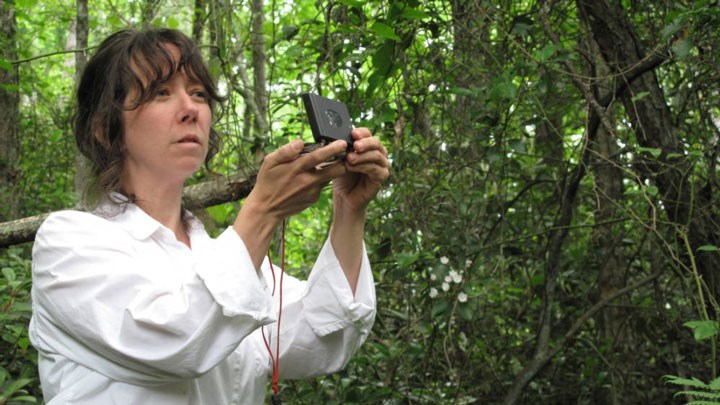
by Richard Mann - Monday, May 4, 2020

At times of emergency such as the coronavirus pandemic, our thoughts turn to the basics needed to keep ourselves and our families safe and healthy. For many of us, this starts with making sure we are prepared and have a survival kit. This can be anything from a pack of bandages, a flashlight and a whistle to a trash bag full of medical supplies, non-perishable food items, water, toilet paper, a multi-tool and a firearm.
The key to a good survival kit is figuring out the situations in which you may need to survive. Whether you and your family are dealing with a six-hour power outage at home, a natural disaster like Hurricane Katrina, or you’re headed out to go hunting or hiking while social-distancing during COVID-19 and find yourself stranded, it is important to plan the contents of your kit based on who will use it.
Your first order of business is to get the family together and decide what you might need to survive. Talk about individual needs, local issues like seasonal bad weather, recurring travel and frequent destinations. This will help you decide how many kits you need and what they should include. You may need multiple kits containing different items. An online search will show that a number of groups such as the American Red Cross offer guidelines for addressing specific scenarios such as COVID-19 to get you started.
Here are six considerations in getting started. Throw all the items in a small backpack or carry bag and store it in your home or vehicle or with your hunting, fishing and camping supplies.

1. First Aid
A basic part of any survival kit is first-aid supplies. Being able to administer the proper care for cuts, abrasions, fever and even broken bones is important. Consider including items such as a large trauma pad, tourniquet, forceps, eye dressing kit, snakebite kit, tweezers, survival blanket, bandages, aspirin, antihistamines, antiseptic towelettes, insect bite and sting relief creams and antibiotic ointment. If a family member has allergies or requires certain medicines such as for bee stings, include them. I have a small first-aid kit I carry in the car when hunting or fishing. It fits inside a small pouch no larger than a pack of cookies and contains all these items.
2. Light
All survival kits need a flashlight—and two lights are better than one. Consider a compact flashlight and a high-intensity flashlight. This will let you see at a distance without draining your small flashlight’s batteries. It’s also best to select lights that run on lithium batteries because they will not lose power while stored. For two suggestions, companies such as Blackhawk and Surefire have an excellent selection of rugged flashlights suitable for survival situations.
3. Fire
Regardless of the survival situation in which you find yourself, it is comforting to know you can make a fire for heat or to prepare food. Matches in a waterproof container are a good idea but consider adding a butane, windproof lighter. These little gadgets are great fire starters that will come in handy.
4. Knife
My grandfather taught me how important it is to carry a knife. In a survival situation a knife can be a critical tool you use to prepare food, cut rope or make kindling for a fire. I think two knives are best: a small knife for delicate chores and a larger, machete-like knife that can double as an axe. A small multi-tool is never a bad idea either because you never know. You might have to work on your car, boat motor or generator.
5. Security
A firearm can be an important item for your kit. When in the woods, for example, one needs to be capable of potting small game and providing personal protection if the need arises. In many cases, a .22 LR is a good choice. For a few examples of rifles that are lightweight enough to shove in a backpack, small enough to be used by youngsters and specifically designed for survival, check out the Henry Survival Rifle, Marlin Papoose and the KelTec SU22A. Be sure to throw in at least one box of hollow-point ammunition. Last but not least, include a compass to find your bearings if lost.
6. Food and Water
Regardless of the situation in which you might have to survive, think about food and water. If your shelves are stocked, this might not be as important while at home compared to if you get stranded in your car. Bottled water is found at just about any store—providing stores remain open during an emergency—but pre-packaged meals with a high calorie content are not. Look to backpacker supply stores for dehydrated meals or pick up military MREs (“meals, ready to eat”) and maybe a water purifier.
Ironically, not long before writing this article, my family and I were hit with a snowstorm and were without power for several days. Luckily, we had flashlights set aside and our vehicle contained a complete kit we had put together about six months prior. The flashlights came in handy during the power outage—so did a generator—and it was comforting to know that for the period of time my wife and kids were locked in traffic on the treacherously slick highway they had a well-stocked survival kit with them in the vehicle.
Now as America and the rest of the world address the unprecedented coronavirus pandemic, it is more important than ever for us to plan ahead and make considerations for everyone in the family. For starters, the basics of first aid and other survival skills we sportsmen and women learned in our NRA-backed hunter safety classes quickly come to mind.
E-mail your comments/questions about this site to:
[email protected]
